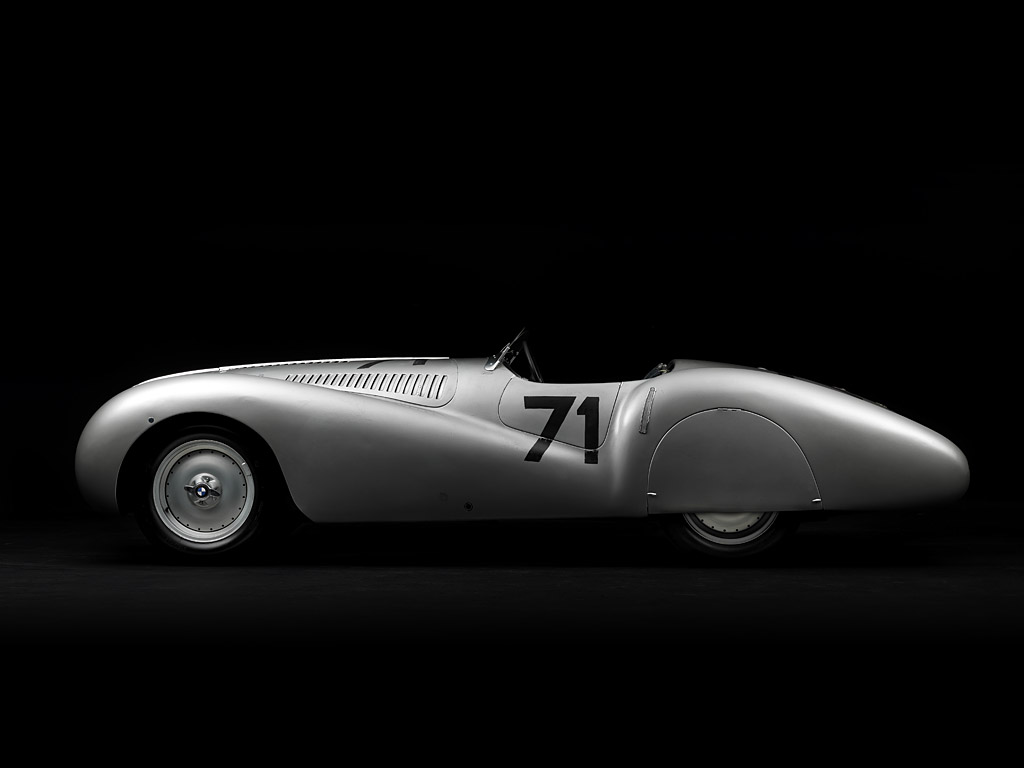1937 BMW 328 Mille Miglia "Bugelfalte"- chassis 85032

The descriptions of the Classic Cars in the Directory were partly generated or supplemented with the help of artificial intelligence (AI). The content may occasionally not always be entirely accurate or factually correct despite careful checking.
The BMW 328 Mille Miglia "Bugelfalte" is an iconic vehicle that epitomizes the engineering excellence and design ingenuity that BMW is known for. This particular model is a 1937 chassis, designated as 85032, which was custom-built for the purpose of racing in the famous Mille Miglia endurance race held in Italy.
The chassis of the BMW 328 Mille Miglia "Bugelfalte" is constructed from lightweight aluminum, which contributes to its impressive power-to-weight ratio. The bodywork features a distinctive design element known as a "Bugelfalte" or creased edge, which gives the car its unique appearance and improves its aerodynamic efficiency.
The BMW 328 Mille Miglia "Bugelfalte" is powered by a 6-cylinder, 1971cc engine that generates 80 horsepower. This engine is mated to a 4-speed manual transmission that delivers power to the rear wheels. The car's top speed is around 130 miles per hour, making it one of the fastest cars of its time.
The suspension of the BMW 328 Mille Miglia "Bugelfalte" is a double A-arm design with coil springs at the front and a rigid axle with semi-elliptical leaf springs at the rear. This setup provides excellent handling and stability while also allowing for a comfortable ride.
Stopping power is provided by a system of hydraulic drum brakes, which are powerful enough to bring the car to a stop from high speeds in a relatively short distance. The wheels are lightweight wire-spoke units, shod with narrow tires to minimize rolling resistance and maximize grip.
Inside the BMW 328 Mille Miglia "Bugelfalte," the driver and passenger are treated to a spartan but functional cockpit. The dashboard features a simple array of gauges and controls, while the bucket seats are lightweight and supportive, with minimal padding to save weight.
Overall, the BMW 328 Mille Miglia "Bugelfalte" is a masterpiece of engineering and design that represents the pinnacle of pre-war racing technology. Its lightweight construction, powerful engine, and aerodynamic design made it a dominant force on the racetrack, and its timeless style continues to captivate enthusiasts and collectors to this day.
Milestones
- Introduced in May 1936 at the Eifel-Rennen in Germany - Debuted at the 1936 Mille Miglia finishing fifth overall and first in class - Won the 1937 Mille Miglia in record time with an average speed of 103.416 km/h - Won the 1938 Mille Miglia with driver Bortoletti and co-driver Baistrocchi - Was sold to private owners after its racing career and eventually underwent restoration in the 1990s - Featured in the opening scene of the 1999 movie, The Thomas Crown Affair - Became the centerpiece of the BMW Museum in Munich as a symbol of the company's racing heritage.Technical
- BMW 328 Mille Miglia "Bugelfalte" was a sports car produced by BMW in 1937. - The chassis number of this model was 85032. - The car was designed by Fritz Fiedler and Walter Baumer. - It was powered by a 2.0-liter straight-six engine with an output of 80 horsepower. - The engine was mated to a 4-speed manual transmission and rear-wheel drive. - The car featured an aerodynamic body with a distinctive "Bugelfalte" design (meaning "trouser crease") that gave it a sleek and stylish appearance. - It had a top speed of 160 km/h (100 mph) and could accelerate from 0 to 100 km/h (0 to 62 mph) in 9 seconds. - The suspension system used a mix of double wishbones and transverse leaf springs at the front and a rigid axle with torsion-bar springs at the rear. - The brakes were hydraulic drum brakes on all four wheels. - The car had a curb weight of 780 kg (1,720 lb) and a fuel tank capacity of 60 liters (16 gallons). - The BMW 328 Mille Miglia "Bugelfalte" was a successful racing car, winning its class in the famous Mille Miglia race in Italy in both 1938 and 1940, as well as numerous other races and rallies.